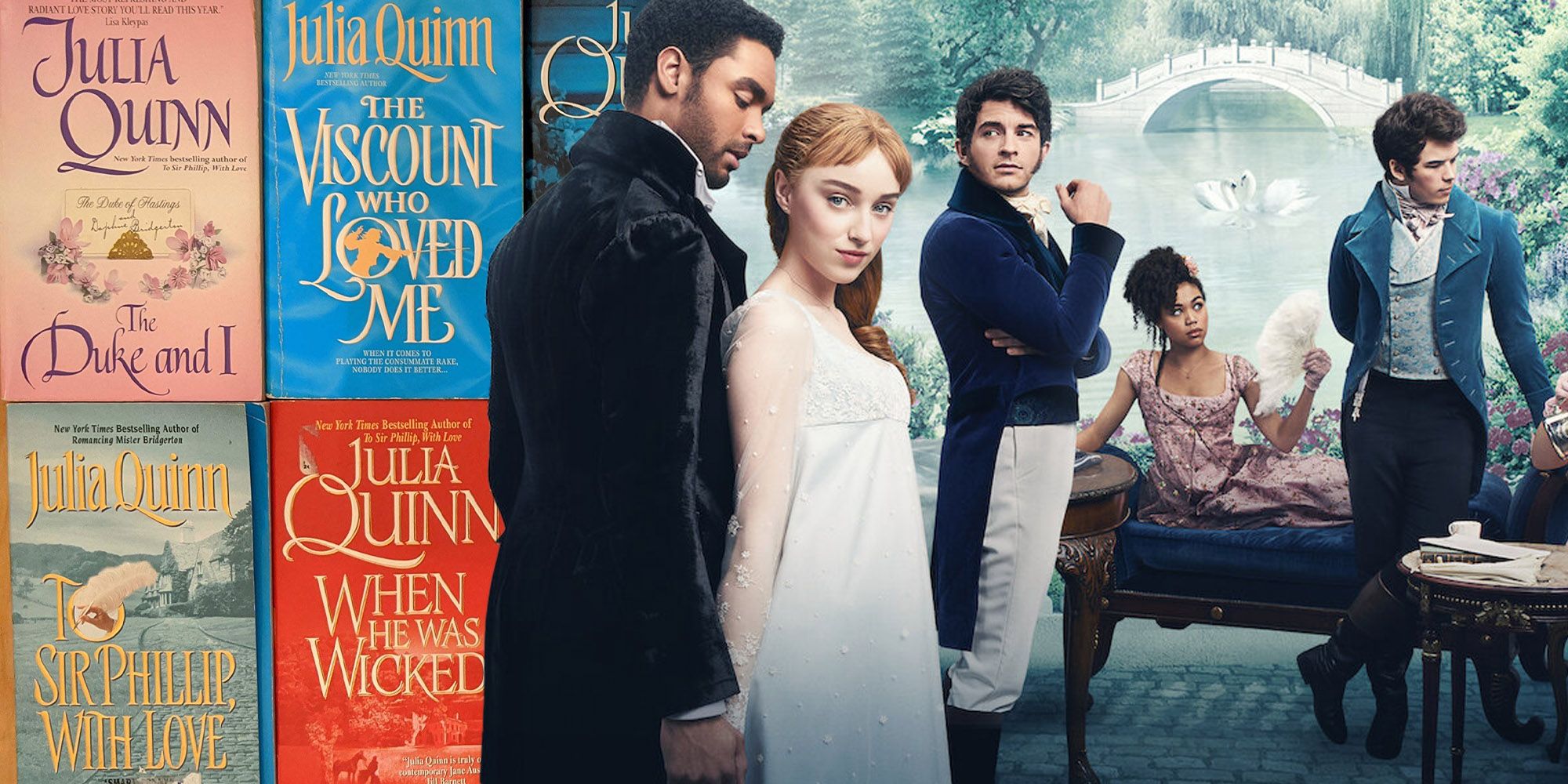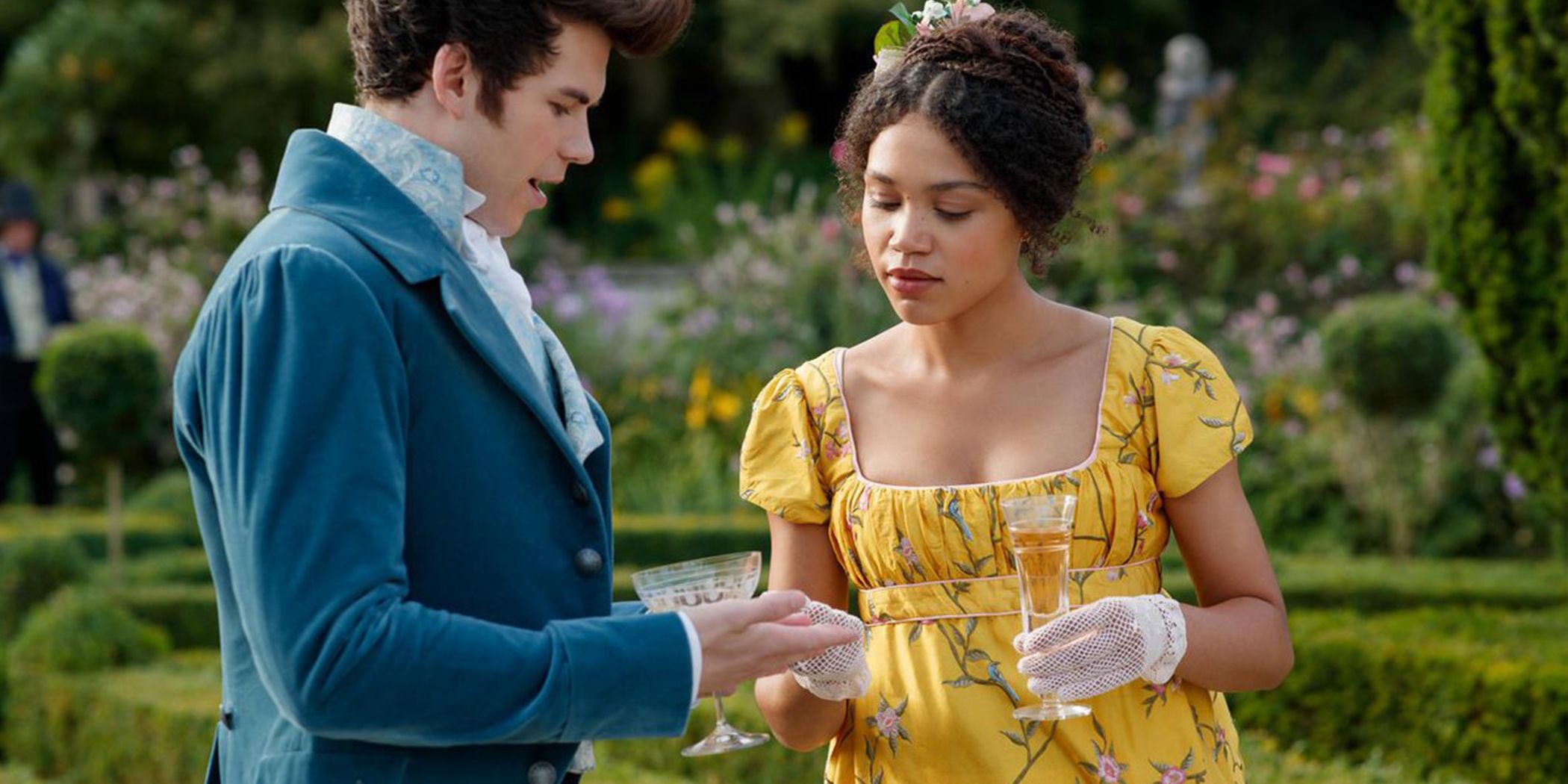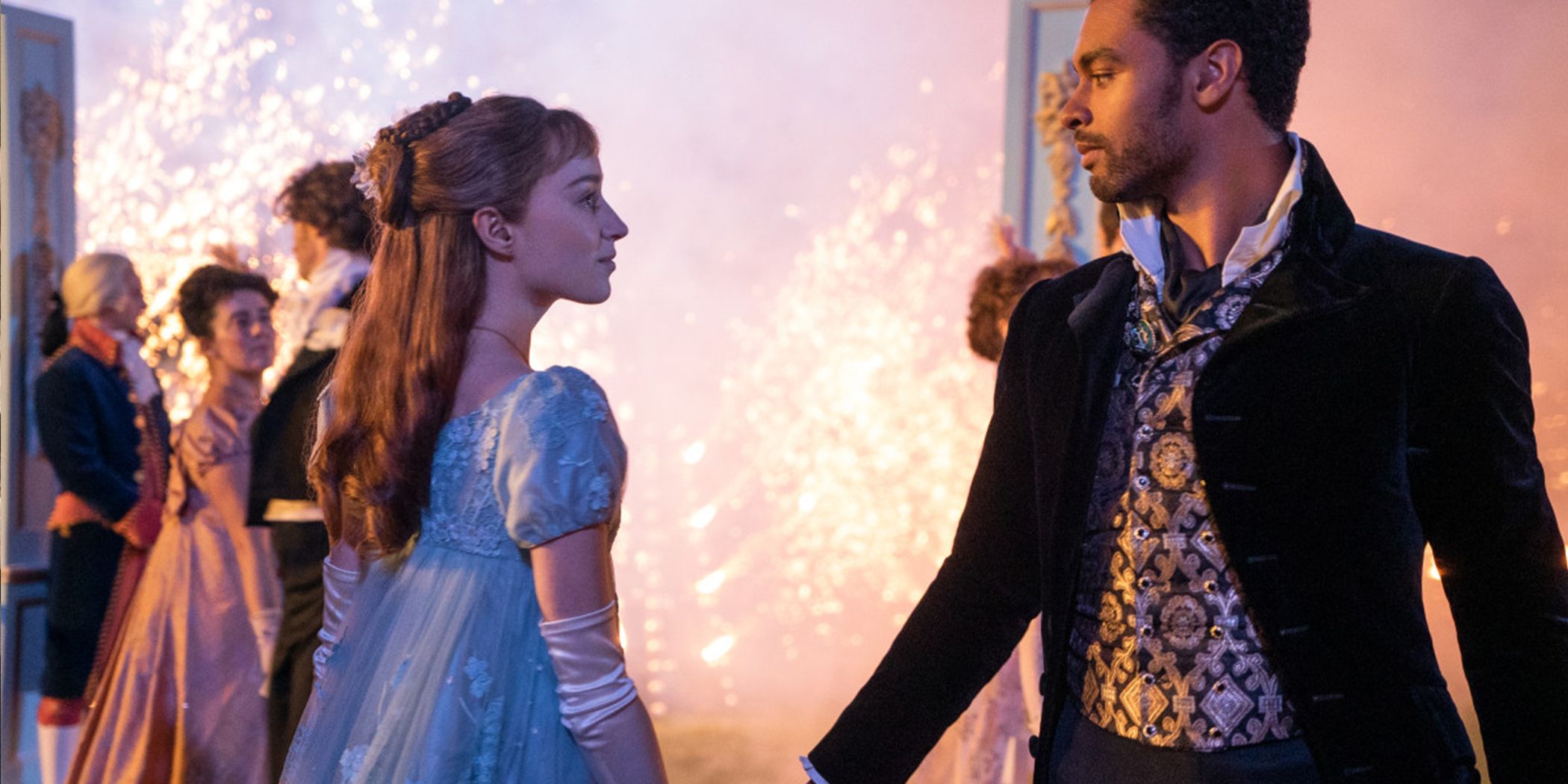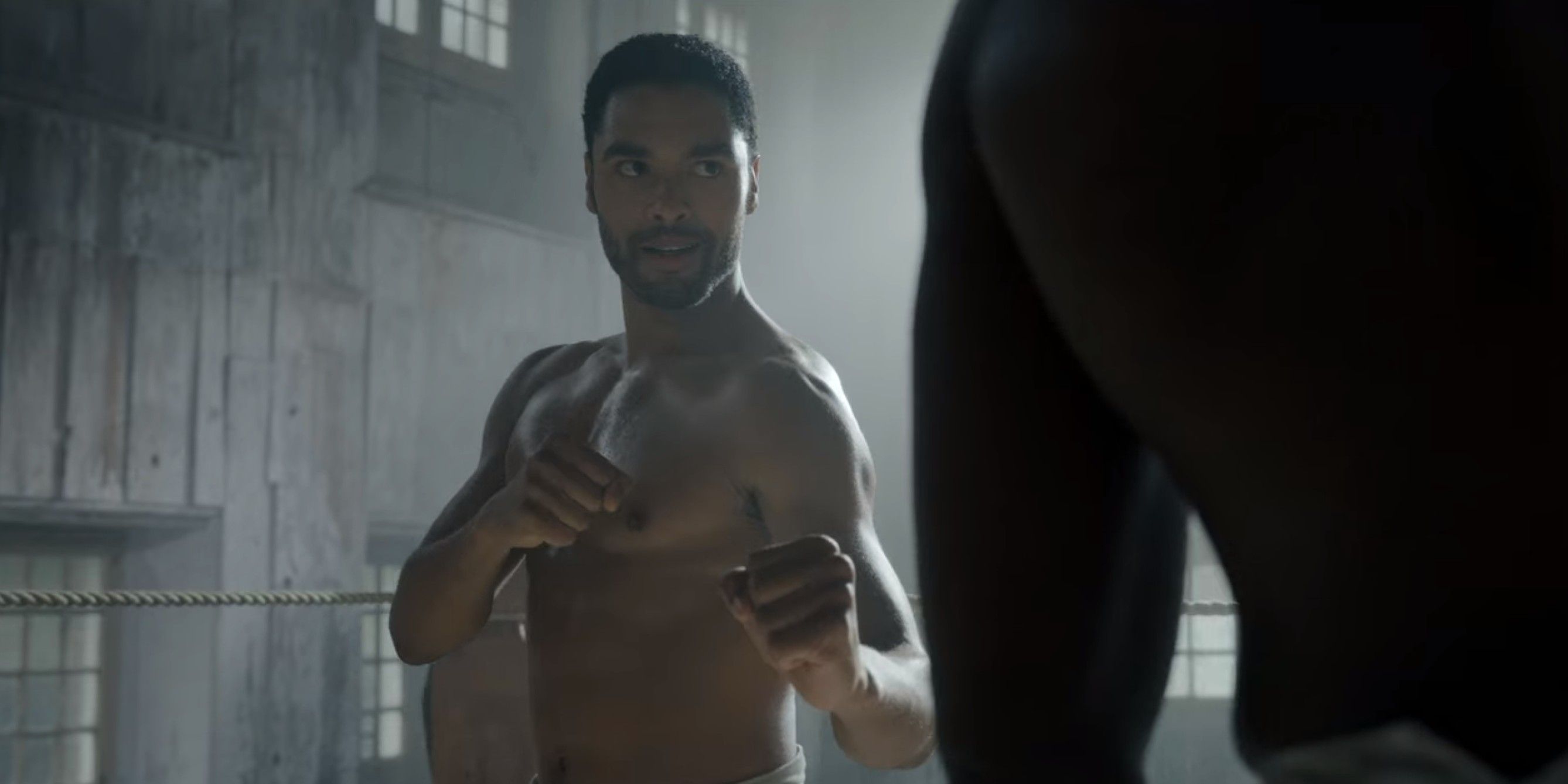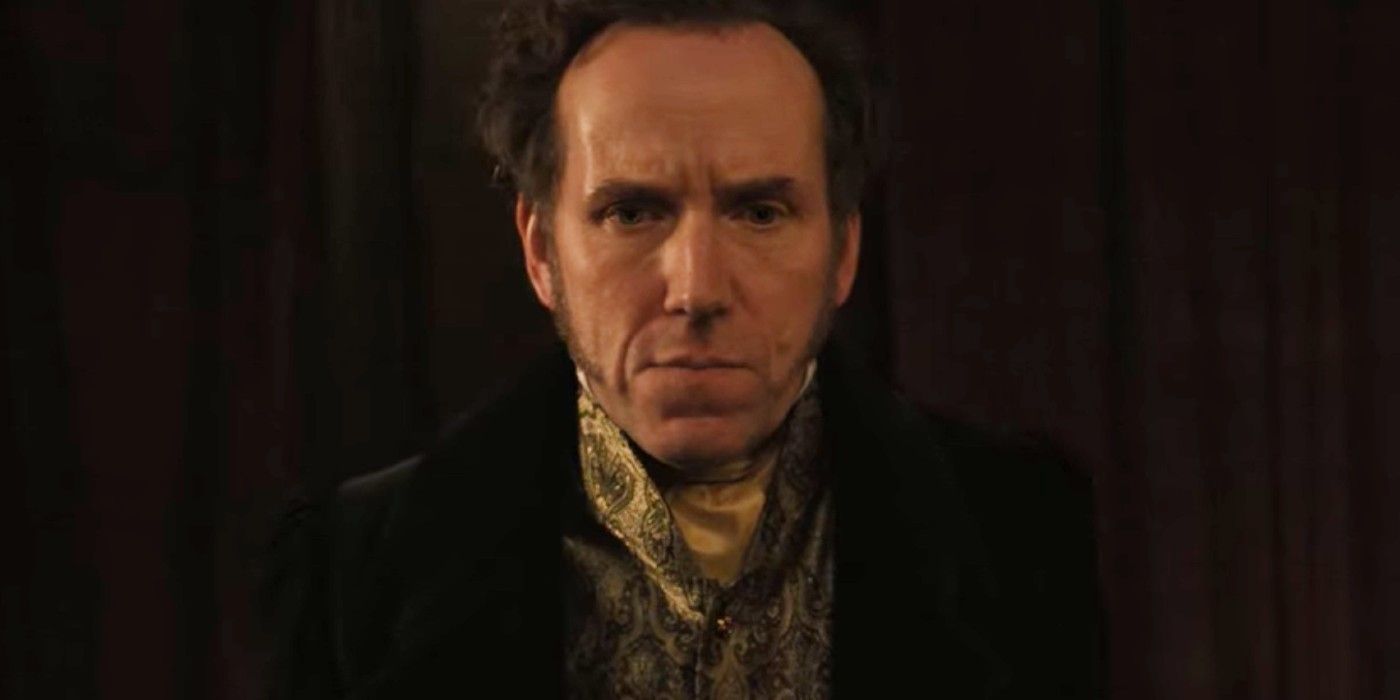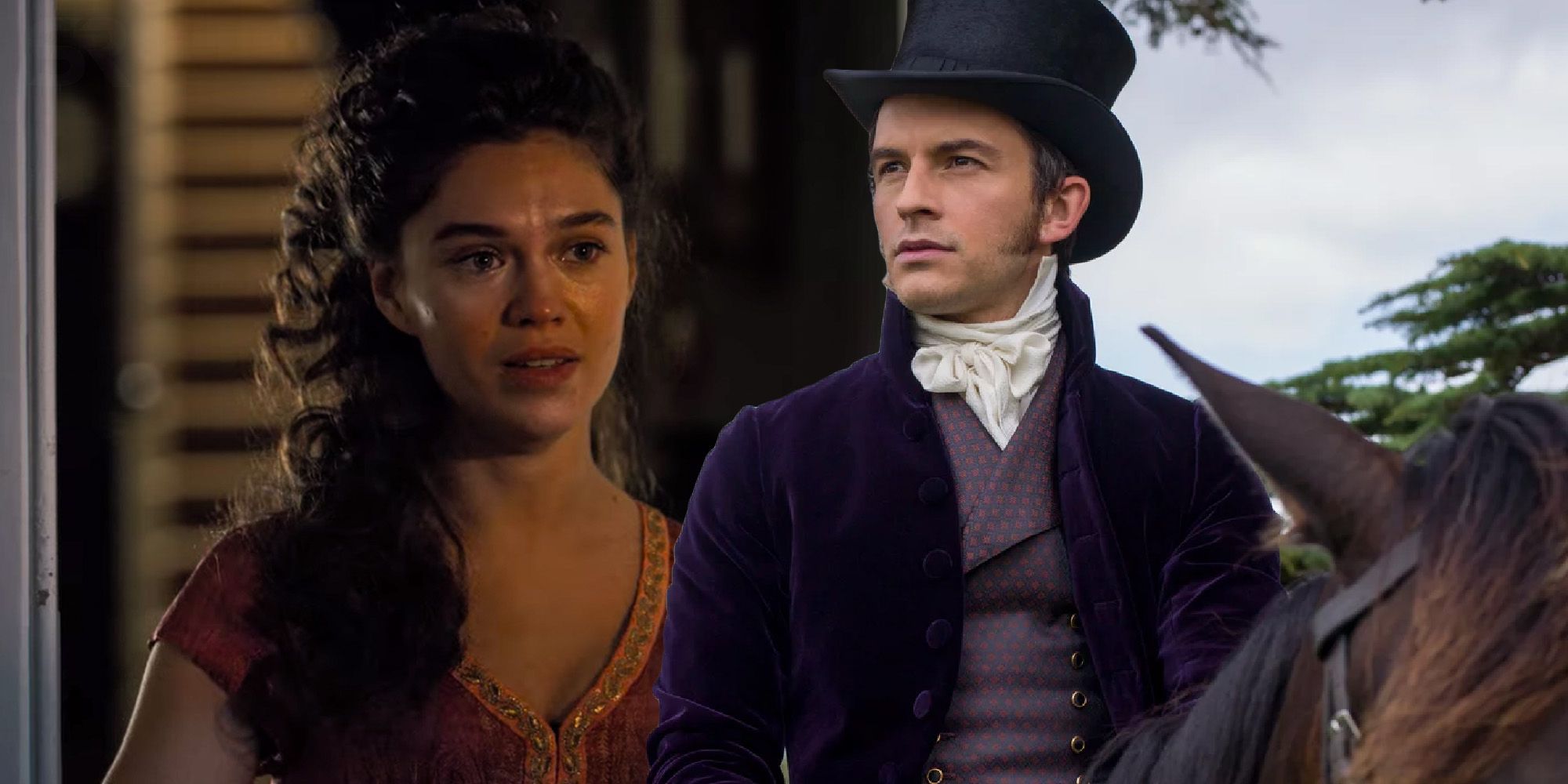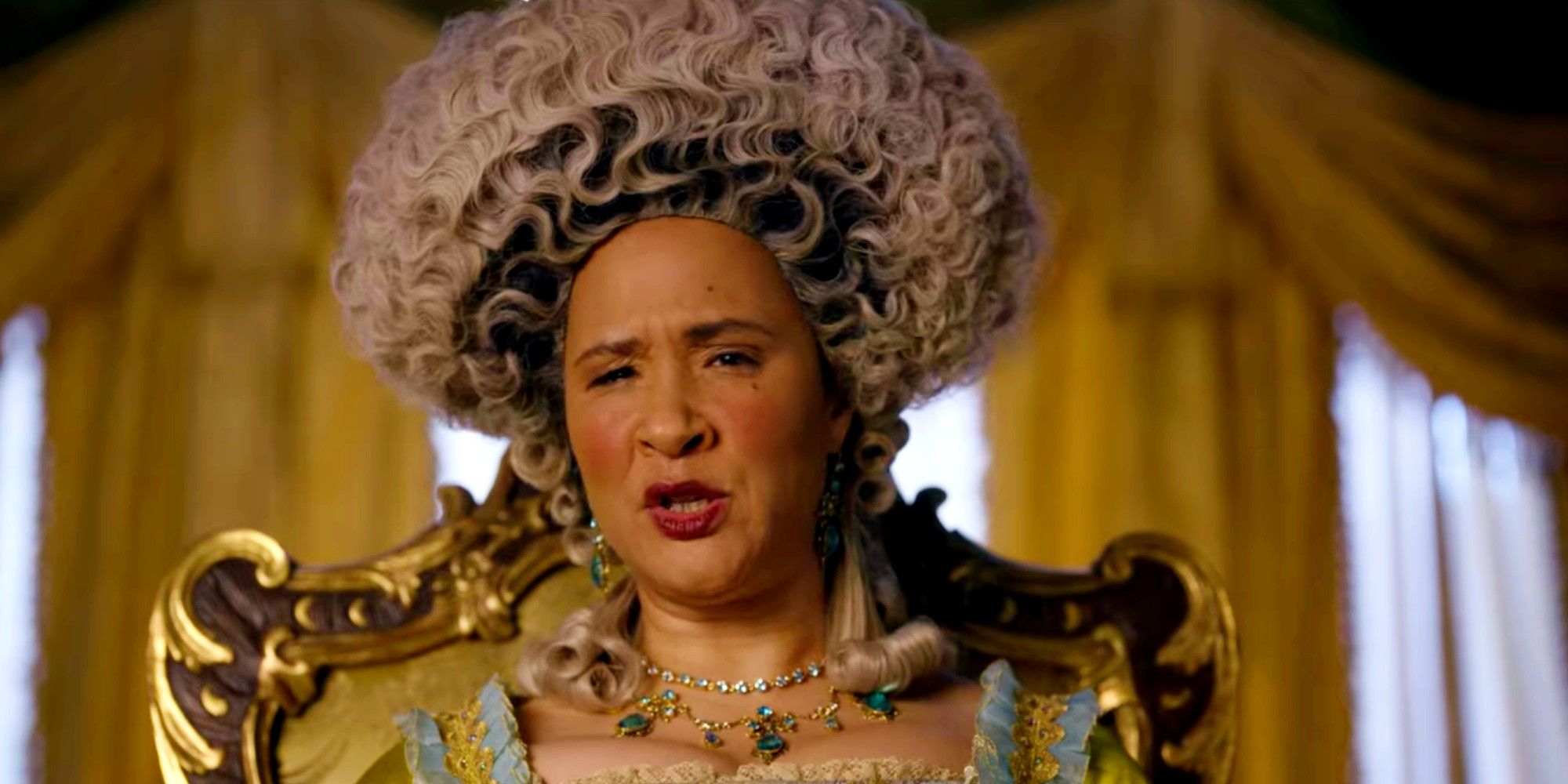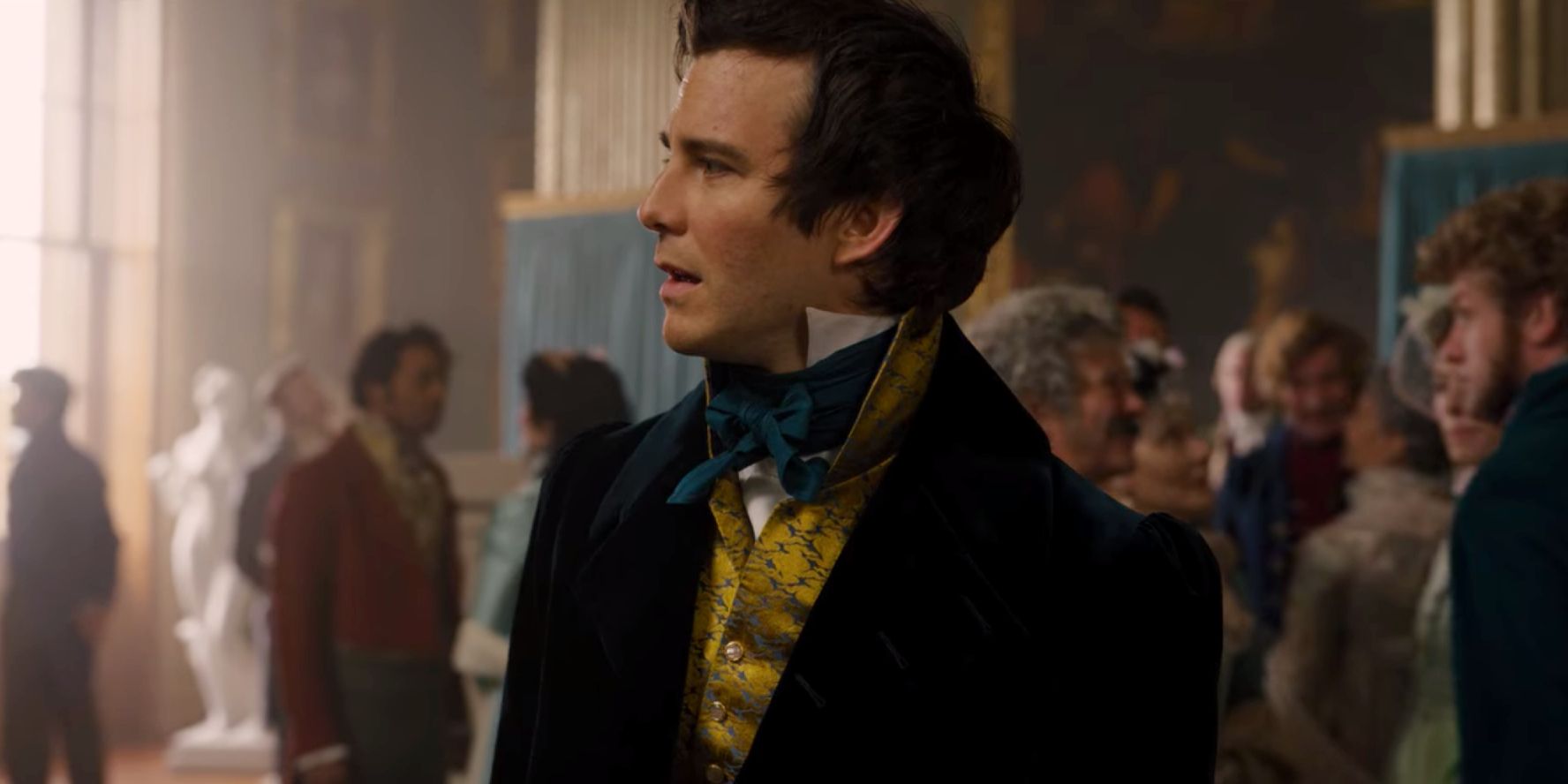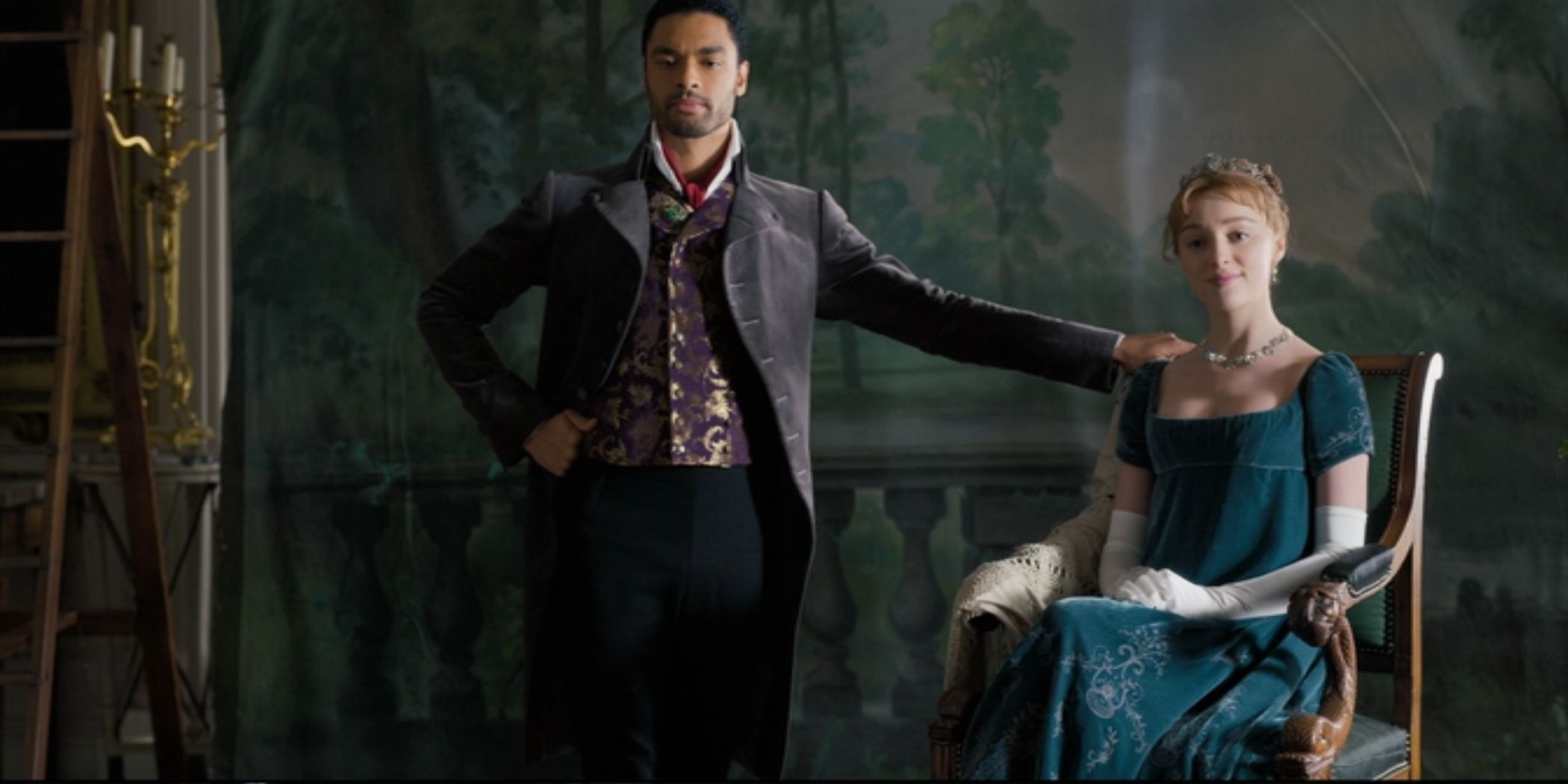For the most part, Bridgerton stays true to the romance novels by Julia Quinn, but it also makes some notable changes in a few key areas. The Netflix series has seemingly taken the world by storm, with massive viewership numbers and rumored plans for much more to come. Many new fans of the series will likely turn to the books while they wait for season 2, and they’ll find that Quinn’s version of the story is different in some significant ways.
At its core, Bridgerton is a pretty formulaic Regency-era romance. It’s full of dashing rich people, poor communication, rumors, and bodice-ripping. Bridgerton has garnered popularity beyond its genre, however, largely due to the fantastic chemistry of the show’s cast and its strong writing along numerous, interconnected plotlines. Some of those high points are taken directly from the pages of Quinn’s novels, but a number of them are brand new for the Netflix version.
In any adaptation, maintaining a balance between staying true to the source material and introducing new ideas is a delicate task. Bridgerton threads that needle pretty well, and the changes it makes generally make sense for adjusting the story to a new medium. Here are the biggest changes the Netflix series makes to Julia Quinn’s books.
Marina Thompson Is Completely Different In The Books
Starting with perhaps the show’s biggest divergence from the novels, Marina Thompson is completely different in the two versions. In the show, she is a protagonist of near-equal narrative status to Daphne, offering a mirrored image in many ways of the Duchess’s own story. Marina struggles with complex problems of ethics and self-preservation in a world that is not designed to protect her, and she becomes an emotional centerpiece of the story as a result. In the end, she agrees to marry Phillip, the brother of her deceased lover who was the father of her child.
This marriage to Phillip is the only real similarity between the Marina of Bridgerton and the Marina of the books. In Quinn’s novel, Marina is only briefly mentioned later in the series – a severely depressed woman who dies following a suicide attempt. Phillip actually ends up becoming romantically involved with Eloise in the books, long after his former wife’s passing. The book Marina was a relation of the Bridgertons, not the Featheringtons.
Daphne And Simon’s Relationship Is Rather Different In The Books
Bridgerton shows Daphne in her very first season of eligibility, after the Queen’s good word makes her the most desired lady in the ton. Her prospects drop significantly thanks to her older brother Anthony’s incessant meddling, but she still manages to find love by the end of the courting season. Daphne's romance with Simon is challenging, but the two manage to open up to each other by the end of season 1.
The core of Daphne and Simon’s story is the same through both versions, but the show does make a few key changes. For starters, Daphne is in her second season in the books, not her first, and she has significantly more trouble attracting the eyes of promising suitors. Daphne's brother Anthony is much more relaxed about his sister’s marrying, and is not the cause of her unfortunate circumstances. Anthony even knows about Simon and Daphne’s ruse in the books and agrees to it, under the condition that they don’t spend actual time alone. Lady Danbury also plays a slightly different role in the pair’s story, as she is not the mother figure to Simon in the books that she is in the show.
The Netflix series also makes some notable improvements in terms of the toxicity of Simon and Daphne’s relationship. Simon is a good deal coarser and harsher in the books, boasting some truly reprehensible moments of asserting his ownership of Daphne out of anger. This in turn sparks The Duke and I’s most notorious scene, when Daphne causes Simon to ejaculate inside her against his will.
In the book, Simon comes to bed drunk one night after Daphne confronts him about pulling out during sex. After he falls asleep, Daphne takes advantage of his state in a scene that has widely been condemned seemingly condoning sexual assault. The show alters the scene notably, turning it into a consensual encounter between the two that Daphne turns to her advantage by staying on top of Simon when he climaxes. Still, Simon’s actual consent in the moment is questionable at best, and some viewers have criticized Bridgerton for not going far enough to fix the scene, or remove the moment from the series completely.
Bridgerton’s Boxing Plotline Is New
In Bridgerton, Simon frequently engages in shirtless bare-knuckle boxing bouts with his friend Will Mondrich. It’s a nice touch for fans of sweaty muscles or masculine bravado, but it has nothing to do with Quinn’s books. The boxing scenes, fight-throwing plotline, and even the characters of Will and his wife Alice are all new in the Netflix show. Overall, the added storyline is a good addition, showing some different dimensions to Simon’s character and introducing a wholly independent and compelling arc with Will and Alice. And of course, the boxing provides abs in plentiful supply.
Lord Featherington Is Already Dead In The Books
Season 1 of Bridgerton ends with the presumed death of Lord Featherington – a character who’s already dead by the time The Duke and I begins. His revival makes sense, as it gives Marina Thompson a reason to remain with the Featherington family after her pregnancy is discovered. Lord Featherington may not be a very major character in the series, but his despicable nature and gambling addiction move the plot along in some key ways. It will be interesting to see who replaces him in Bridgerton season 2.
Anthony And Siena’s Relationship Is Not In The Books
Quinn’s book series features a very brief appearance from an opera singer named Maria Rosso, who is a past mistress of Anthony Bridgerton. Her role in the novels is tiny, however, and her relationship with the Viscount seems to have been nothing more than a brief fling. Maria was adapted into the character of Siena Rosso in the show, similar in her occupation, but very different in her relationship with Anthony. Sienna is a much more fully-formed character, and she plays a much more important role in the story. The incompatibility between the two lovers comes off as truly tragic. Hopefully, Bridgerton hasn’t seen the last of Siena Rosso.
The Queen And Prince Friedrich Are Not In The Books
One of Bridgerton’s bigger divergences from the books is the inclusion of more characters of royal stature. Queen Charlotte plays a major role in the plot, both by meddling in Daphne’s affairs and in searching for the identity of Lady Whistedown. She even tries to set Daphne up with her foreign relation Prince Friedrich. Neither of these royals features in Quinn’s books, though they make excellent additions to the Netflix version of the story.
Benedict’s Bridgerton Story Is Very Different Than The Books
The second-born son of the Bridgerton clan has a substantial if isolated arc in the first season, where he experiments with art, sex, and not living strictly by the codes of his social station. There are orgies, paintings, queerbaiting, and some truly touching heart-to-hearts with Eloise. Most of this material, including the very existence of the modiste Genevieve Delacroix and the artist Henry Granville, is new to the show. It should be interesting to see how Benedict’s story develops going forward, and if it will continue to veer off course from the version in the books.
Bridgerton’s Alternate Racial History Is Not In The Books
Lastly, Bridgerton makes one major change to the world of the story by introducing an alternate history of race relations in Regency-era England. The show presents a United Kingdom where – at some unknown point in the relatively recent past – reparations were paid to black citizens in the form of money, power, and political titles. This aspect of the world is only barely alluded to in a few passing lines, and it should be interesting to see how the story expands on the idea moving forward. The books have no such alternate history, and all their primary characters are presumably, assuredly white. In a genre generally lacking severely in diverse representation, it’s nice to see Bridgerton attempt to make some steps in the right direction.

